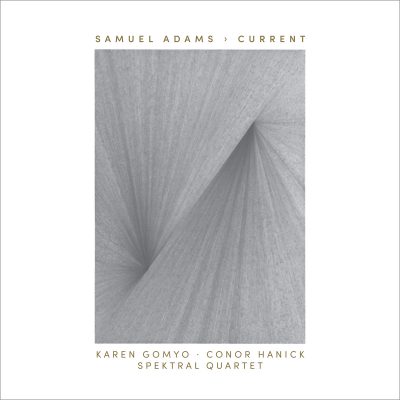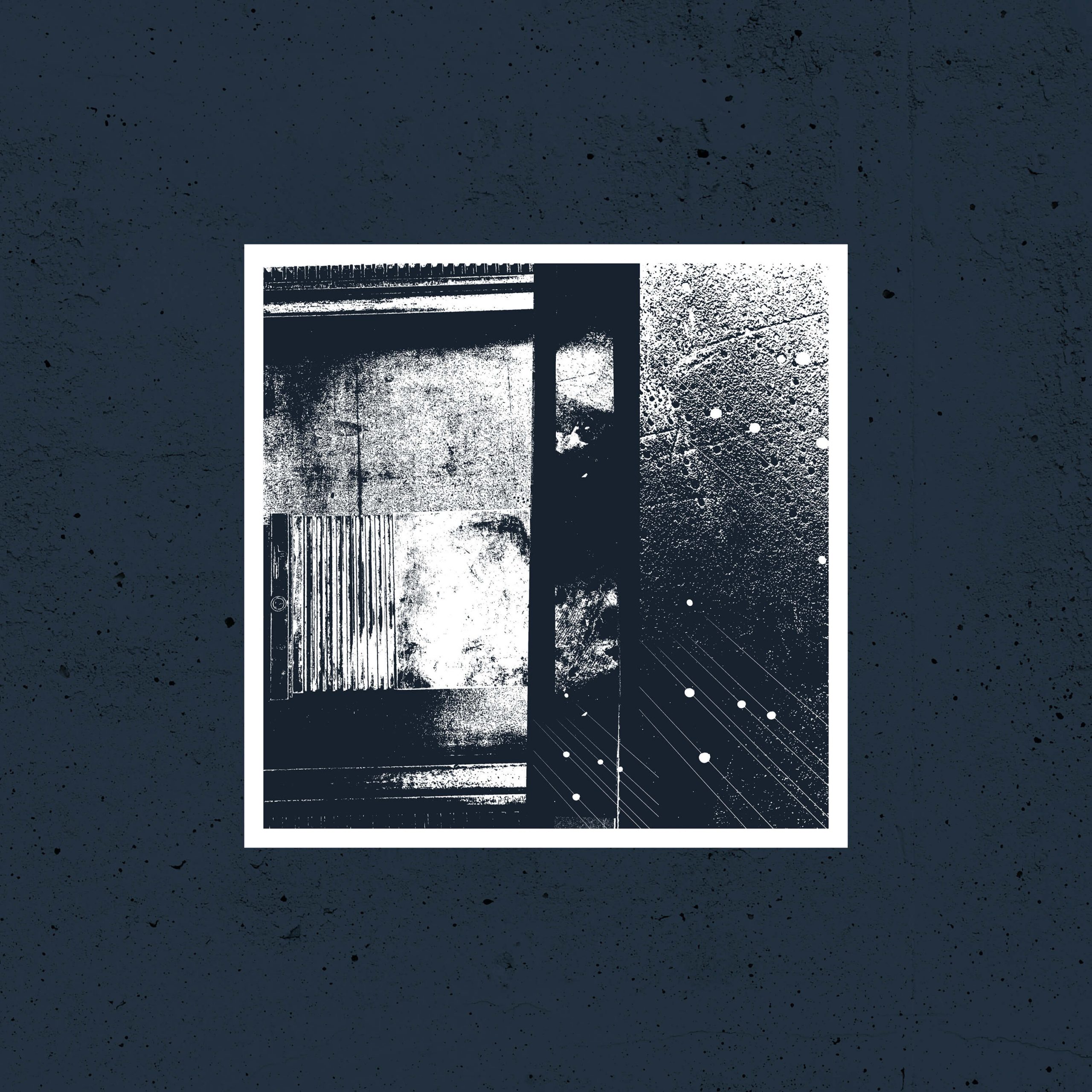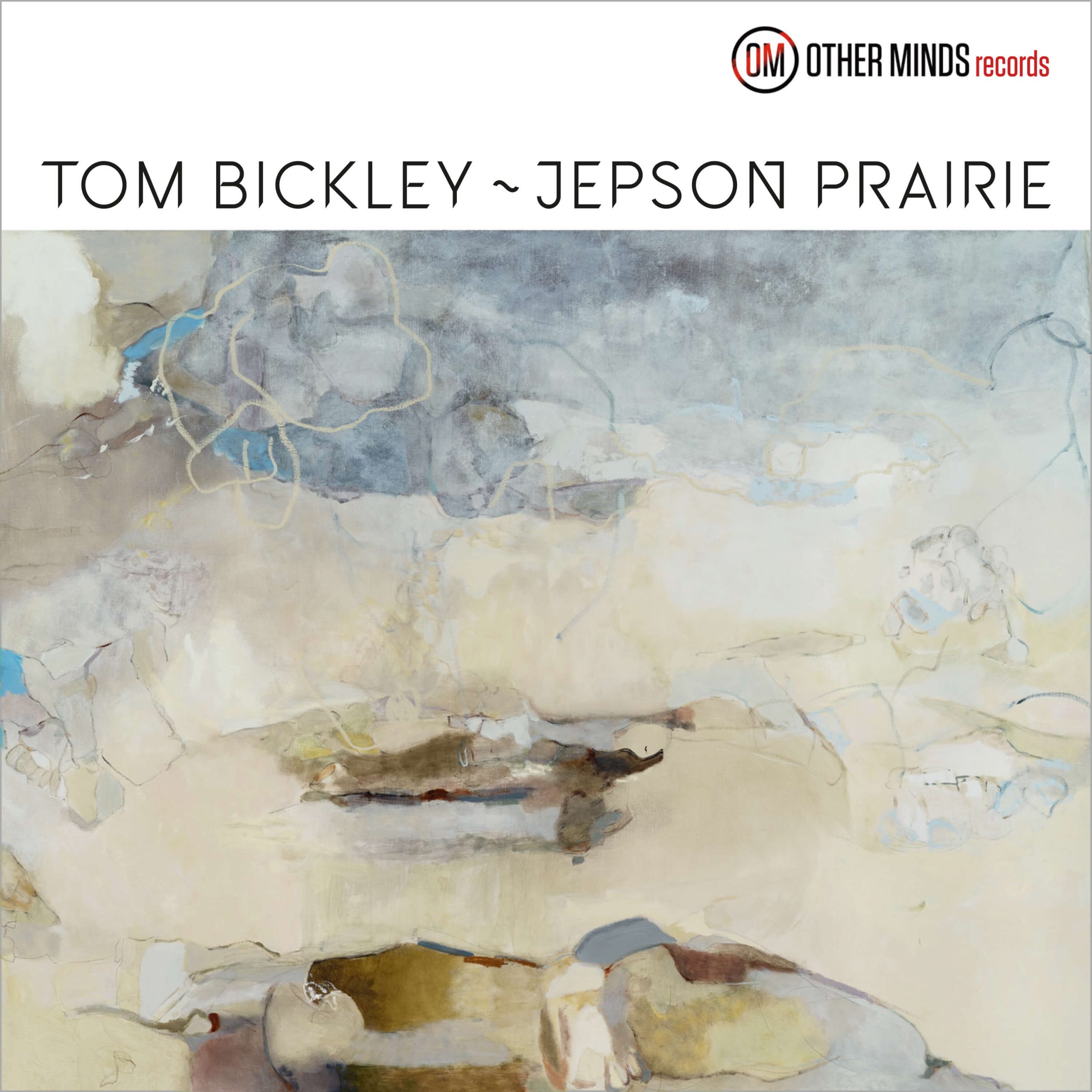Other Minds is proud to present Current, three recent works by 2019 Guggenheim Fellow Samuel Adams, two of which are world premiere recordings. The title work, Current, (world premiere recording), scored for string quartet and resonating snare drums, is performed by the Spektral Quartet, which co-commissioned the piece with Cal Performances; this album marks one of the group’s last projects as an ensemble. At the 2022 premiere in Berkeley, the San Francisco Chronicle called Current “a superbly inviting meditation on our old friends harmony, rhythm and rhetoric,” adding that the work represents “a powerfully precise convergence of ambition and means.” Bookending that large-scale work are Violin Diptych (world premiere recording), performed by violinist Karen Gomyo and pianist Conor Hanick, and Shade Studies, a piano solo performed by Hanick with electronics.
The string quartet Current that provides the centerpiece of Adams’ new album dates from 2016, when Spektral Quartet commissioned the composer to write a short work that became the 12-minute study Quartet Movement. Though that piece stands alone, Adams sensed that it might also be used as the basis for something larger, so over the next few years he expanded its scope. The present five-movement work, completed in 2019, was co-commissioned by Spektral Quartet and Cal Performances, with additional assistance from New Music USA. Adams elaborates:
“The crux of the piece is the relationship between the minimal digital language of the resonating snare drums and the warm, acoustic complexity of the string quartet. … The result is a virtuosic display of four individuals performing with artificial, indifferent musical elements. Together, a complex polyphonic musical organism emerges. … The title Current seemed appropriate both for its reference to the electric currents that activate the resonating snare drums as well as the intense, weather-blasted quality of the work’s sound world.”
In his liner notes for the album, Spektral Quartet violist Doyle Armbrust characterizes Adams as being obsessed with “closing the distance, both real and perceived, between acoustic and electronic music,” and Current is fertile ground for observing that process at work. For Adams, the two are natural associates; their differences are convenient for distinguishing their voices in a musical texture, but they are otherwise perfectly compatible. He dissects their interaction on the level of pure sound mechanics and uses those building blocks to develop the sonic world of the piece, in the same way one might take the prominent overtones of an oboe timbre and give those pitches to accompanying strings. The four amplified snare drums that surround the quartet in Current increase their characteristic rattle according to the volume and intensity of the acoustic sound they “listen” to, just as the mood of an audience and sound of a hall affect the performance of live players. In Armbrust’s formulation, Adams “tries to create a sense of inevitability”; the juxtaposition of the snares and strings is like a postulate, and every conclusion to which it leads is warmly welcomed into a radically inclusive and inviting musical fabric.
Violin Diptych is a work dating from 2020, the result of Adams turning his attention from a large orchestral work that he realized might not be heard for several years to “small, nimble pieces – not on commission, but out of an organic desire to directly connect with my closest collaborators.” Inspired by visual art diptychs both Medieval and modern, the work naturally invites comparison between two parts that complement and comment on each other. The first part, “Playing Changes,” is what the composer calls “a floating soliloquy” for violin alone. This movement itself is a kind of diptych: it is filled with musical acknowledgments of its own historical roots in Bach’s solo violin works, while its expressive language is firmly fixed in the present. The same proportions and harmonic character are used for the second movement, “Changes Move,” which also adds piano to the texture and complexity to the implied conversation with the past.
Adams’ Shade Studies, a work from 2014 for piano and electronics, sets the acoustic resonance of the piano in counterpoint with sine waves. Cryptically described by the composer as an exploration of musical “shade,” the work makes discreet use of its electronic materials to alter the perception of the piano tone. The subtlety of their deployment is as characteristic of Adams’ works as the electronics themselves, a point the San Diego Union-Tribune also emphasized, calling Shade Studies “a marvelously constructed meditation on a narrow dynamic field. Softly played notes accompanied by barely audible electronic samples forced our ears to find the spaces between the ‘real’ sound and the ‘electronic’ sound. It was magic.” Shade Studies was commissioned by Russ Irwin to be performed by pianist Sarah Cahill in celebration of Terry Riley’s 80th birthday.
This superb portrait album from composer Samuel Adams captures his ability to shade and collide acoustic music rooted in the classical tradition with subtle electronic flourishes that transform his writing in mysterious ways. Peter Margasak, Bandcamp Daily, September 2023
Adams shows himself to be among the most interesting composers of the millennial generation in his negotiation of the tensions that shape and define his musical narratives: between directness and implication, silence and resonance, emotion and its aftermath. Thomas May, Gramophone, October 2023
…this album is likely to make a splash for its precision, ideas and remarkable performances. Ivana Popovic, The Whole Note, October 2023
‘Current”, Samuel Adams’s Second String Quartet opens with a neat two-note motif that is gradually stretched out of shape like an over-worn t-shirt. More important are the spaces in-between – enhanced by electronics derived from snare drums. The resulting resonance is a thread –the eponymous current – throughout the five movements, beautifully integrated with the acoustic sound produced by Spektral Quartet, who, as their name suggests, are at home in this abstraction. Claire Jackson, BBC Music Magazine, October 2023
It’s a deeply rewarding disc that is by turns exhilarating and emotionally affecting, from a composer with very much his own distinctive voice – and captured in close, detailed sound. David Kettle and David Threasher, The Strad, October 2023
…the performance combines well-shaped sonorous architecture with utmost refined detail, coming up with pristine recorded presentation of a notable musical work, its effect being enhanced upon consecutive listening sessions. Jari Kallio, Adventures in Music, January 2024
Violin Diptych
1 · I. Playing Changes, 6:26
2 · II. Changes Move, 6:43
String Quartet No. 2, Current
3 · I. fast, noisy (rallentando), 1:28
4 · II. fast, quiet, building (for Chris Stark), 11:12
5 · III. quiet, patient, 6:32
6 · IV. fast, noisy (ritornello), 2:25
7 · V. pulsing, simple (for Ingram Marshall), 6:37
8 · Shade Studies, 8:38





